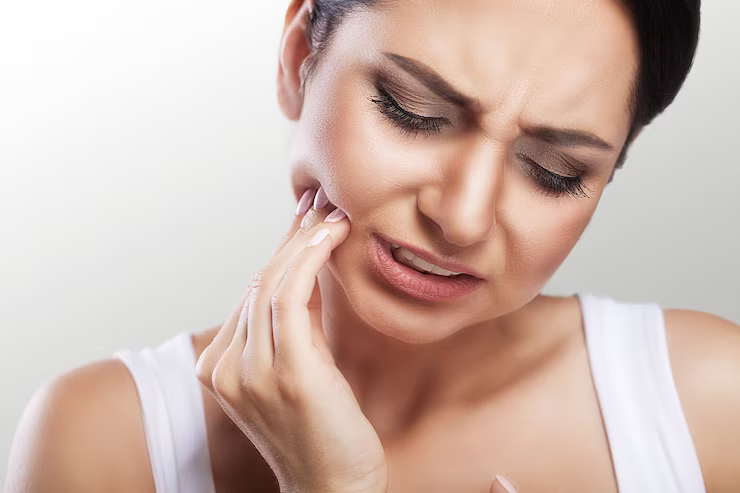
Orofacial pain is a prevalent condition that affects millions of people worldwide. It refers to any discomfort or pain experienced in the region of the face, jaws, and mouth. This article aims to provide a comprehensive understanding of orofacial pain, its causes, symptoms, diagnosis, and available treatment options. Whether you’re a healthcare professional or someone seeking answers to your own pain, this article will serve as a valuable resource.
What is Orofacial Pain
Orofacial pain is a broad term used to describe any discomfort or pain experienced in the face, jaws, or mouth. It can originate from various sources, including dental problems, musculoskeletal disorders, nerve damage, and even psychological factors. The pain may be localized to a specific area or radiate to other parts of the head and neck. Orofacial pain can significantly impact a person’s quality of life, affecting their ability to eat, speak, and engage in daily activities.
Causes of Orofacial Pain
Orofacial pain can have multiple underlying causes. Some common contributors to orofacial pain include:
- Dental Problems: Dental issues such as tooth decay, gum disease, or impacted wisdom teeth can lead to orofacial pain.
- Temporomandibular Joint (TMJ) Disorders: Dysfunction or misalignment of the TMJ, which connects the jawbone to the skull, can result in orofacial pain.
- Bruxism: Teeth grinding or clenching can strain the jaw muscles and cause pain.
- Trigeminal Neuralgia: This condition involves irritation or damage to the trigeminal nerve, leading to severe facial pain.
- Sinus Infections: Inflammation or infections in the sinuses can cause facial pain, often felt around the cheeks and forehead.
- Muscle Tension and Spasm: Stress, poor posture, or jaw muscle overuse can result in muscle tension or spasms, leading to orofacial pain.
Types of Orofacial Pain
Orofacial pain can manifest in various forms. Here are some common types of orofacial pain:
- Temporomandibular Joint Disorder (TMD) Pain: TMD pain is characterized by discomfort or pain in the jaw joint and surrounding muscles.
- Dental Pain: Toothaches, dental infections, or trauma to the teeth can cause localized orofacial pain.
- Neuropathic Pain: Nerve damage or irritation can lead to neuropathic pain, which may present as a burning, shooting, or electric shock-like sensation.
- Headaches: Certain headaches, such as tension headaches or migraines, can cause orofacial pain due to referred pain patterns.
- Myofascial Pain Syndrome: This condition involves the development of trigger points in the muscles, leading to pain and muscle stiffness in the face, head, and neck.
Common Symptoms of Orofacial Pain
Orofacial pain can manifest with a wide range of symptoms, which may vary depending on the underlying cause. Some common symptoms include:
- Facial Pain: Dull, aching, throbbing, or sharp pain in the face, jaws, or mouth.
- Jaw Stiffness: Difficulty or discomfort while opening or closing the mouth, accompanied by jaw muscle tightness.
- Tooth Sensitivity: Increased sensitivity to hot or cold temperatures in the teeth.
- Headaches: Persistent headaches, often accompanied by facial pain or pressure.
- Earaches: Discomfort or pain in the ears, sometimes accompanied by tinnitus (ringing in the ears).
- Limited Jaw Movement: Restricted range of motion of the jaw, making it challenging to chew or speak.
- Sleep Disturbances: Orofacial pain can lead to sleep problems and fatigue due to discomfort.
Diagnosing Orofacial Pain
Accurate diagnosis is crucial for effective management of orofacial pain specialist Houston. A healthcare professional specializing in orofacial pain or a dentist may evaluate the patient’s symptoms and medical history. The diagnostic process may include:
- Physical Examination: The healthcare provider will examine the face, jaws, and mouth to identify any visible signs of inflammation, dental problems, or muscle tension.
- Imaging Tests: X-rays, CT scans, or MRI scans may be ordered to assess the teeth, jaw joints, sinuses, or nerve structures in the head and neck.
- Dental Evaluation: A comprehensive dental examination may be conducted to rule out dental causes of orofacial pain, such as tooth decay or gum disease.
- Diagnostic Injections: In some cases, diagnostic injections may be used to identify the source of the pain. These injections involve administering an anesthetic or medication to specific areas to observe pain reduction or relief.
- Specialized Tests: Electromyography (EMG), computerized mandibular movement analysis, or other specialized tests may be used to evaluate muscle function, jaw movement, or nerve activity.
Treatment Options for Orofacial Pain
The treatment approach for orofacial pain depends on the underlying cause, severity of symptoms, and individual patient factors. Here are some common treatment options:
- Medications: Over-the-counter pain relievers (e.g., acetaminophen, ibuprofen) may help manage mild to moderate orofacial pain. In some cases, prescription medications like muscle relaxants or antidepressants may be prescribed.
- Dental Treatments: If the orofacial pain stems from dental problems, such as tooth decay or gum disease, appropriate dental treatments (e.g., fillings, root canals, extractions) may be necessary.
- Physical Therapy: Physical therapy techniques, such as jaw exercises, heat or cold therapy, ultrasound, or manual therapy, can help relieve muscle tension and improve jaw function.
- Oral Appliances: Custom-made oral appliances, such as splints or mouthguards, may be prescribed to alleviate symptoms of temporomandibular joint disorders or bruxism.
- Trigger Point Injections: In cases of myofascial pain syndrome, trigger point injections with anesthetics or medications can provide temporary pain relief.
- Stress Management Techniques: Learning stress reduction techniques, relaxation exercises, and behavior modification strategies can help manage orofacial pain associated with stress or anxiety.
